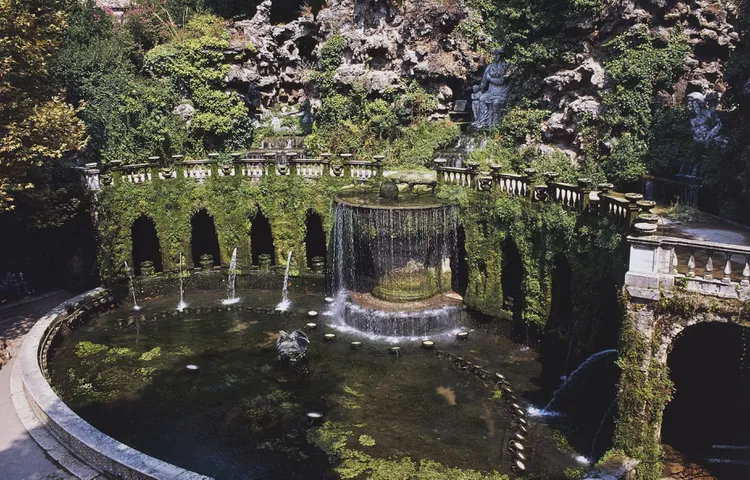1. Villa d’Este Overview
2. Gardens and Waterworks Attractions
3. Getting to Tivoli
4. Tourist Information in Tivoli
Villa d’Este History and Visitor Information
The Villa d’Este was commissioned and built by Cardinal Ippolito d’Este, the son of Lucrezia Borgia and the grandson of Pope Alexander VI. Pirro Ligorio dedicated 17 years to designing the garden, creating a remarkable blend of art and nature. Thomaso Chiruchi contributed to the hydraulic systems, while Claude Venard, a renowned Burgundian artisan, worked on the Villa d’Este’s most notable feature: the Fountain of the Hydraulic Organ (Fontana dell’Organo Idraulico). The cardinal aimed to create a villa and garden befitting “one of the wealthiest ecclesiastics of the sixteenth century.” The design encourages exploration, stimulates imagination, and elicits surprise, making it a place to wander for hours. However, visitors should be mindful of the elevation changes, as they may require some effort to fully appreciate the site.
Gardens and Waterworks
The Villa’s gardens are not just about flowers; they showcase the ingenious use of Renaissance plumbing in its fountains and waterworks, seamlessly integrated into the landscape. With approximately 500 fountains, visitors are often captivated by the artistry and engineering behind them. Numerous statues, some sourced from nearby archaeological sites like Hadrian’s Villa, enhance the visual experience. The gardens exemplify Renaissance culture, presenting a stark contrast to the cultural expressions found in urban settings, like those in Florence.
How to Get to Tivoli
The Villa d’Este is located in Piazza Trento, Viale delle Centro Fontane, in the Lazio region of Italy, just adjacent to the town of Tivoli, approximately 20 miles east of Rome along the S5 road. As a Renaissance jewel, the villa stands as one of the finest examples of mannerist residences in Europe and has been recognized as a UNESCO World Heritage site since 2001. A bit further out from Tivoli lies Hadrian’s Villa, and a local bus provides convenient access between these two significant historical sites.
Many travelers opt to explore both Villa d’Este and Hadrian’s Villa on a day trip from Rome. For those driving, take the S5 highway from Rome to Tivoli, where the Villa d’Este is situated on the western side of town. Alternatively, visitors staying in Rome may find it easier to join a guided tour that combines both attractions.
Tivoli also features a train station that connects to Roma Tiburtina. Visitors can board a train on the Roma-Pescara Line from Tiburtina station to Tivoli, with a travel time of about 30 minutes. After arriving, a shuttle bus can take you from the station to the town center and Villa d’Este.
For those relying on public transport, blue COTRAL buses depart from Rome’s Ponte Mammolo stop on the Metro line every 15 minutes, with a travel time of roughly one hour. There is also a shuttle bus service from Tivoli’s main square to Hadrian’s Villa, which is situated just outside Tivoli, in the plain below.
Tourist Office in Tivoli
The tourist office in Tivoli is conveniently located at Piazza Garibaldi, near the main bus stop and Villa d’Este. Visitors may find useful maps and information available even after regular business hours.





